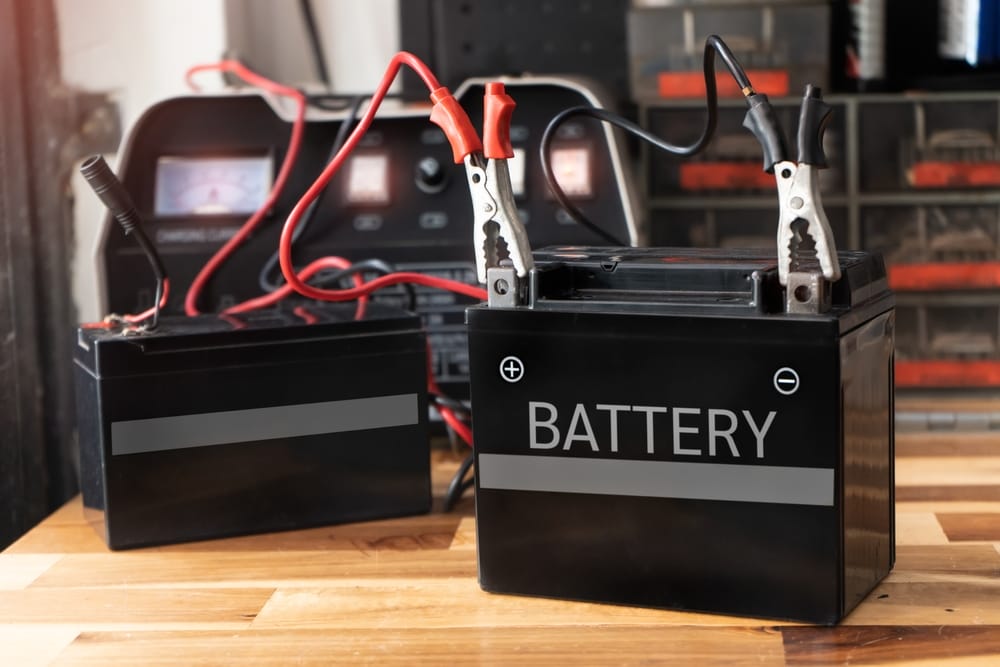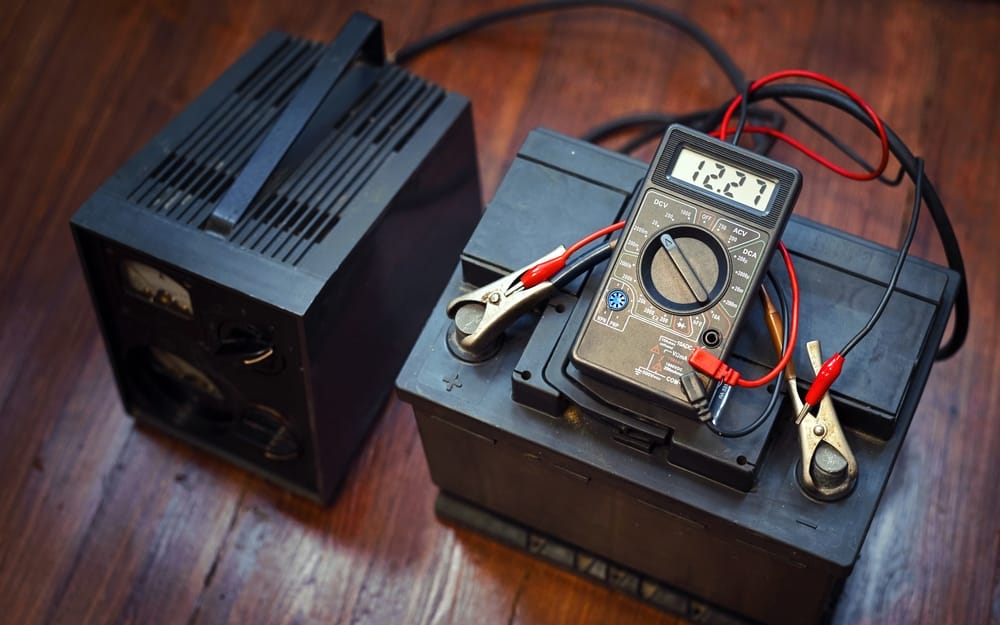Electrical elements on your car will drain electrical power from the
battery.
Modern cars have alternators which are electrical generators that
convert mechanical energy into electrical energy. Idling allows the
battery to charge when the car's engine is running. Idling will charge
a car's battery, but there are more effective ways to charge the
battery.
Keep reading to find out how to charge your car's battery quickly and
efficiently.
 Charging a battery with a trickle charger.
Charging a battery with a trickle charger.
How Long Should I Idle My Car To Charge The Battery?
A vehicle's alternator charges the battery while the engine is running.
It would be best if you idled or drove your car for at least 15 to 20
minutes to give a battery that was completely dead enough charge to
restart before turning it off. However, idling is not the ideal way to
charge your car battery, especially with modern cars whose electrical
systems draw more energy than the car's from the past.
Below we go over what you need to know if you plan on charging a battery by
idling your car.
Is It Better To Idle Or Drive To Charge Battery?
As long as the engine is running, the alternator will be charging up the
battery. However, idling is slower at charging the car's battery than
driving or revving the engine.
If you want to charge your car's battery at the most efficient rate,
it's best to drive the vehicle or rev the engine. This will send more
power through the alternator to charge the battery.
The belt that runs the alternator will turn faster by driving the car and
running the engine at higher RPMs. The faster the alternator runs, the more
electricity it generates, which helps the battery charge in a shorter
space.
Idling will charge the battery, but not as effectively as revving the
engine or driving the car. That's because other electrical systems would
still be drawing power from it. Driving the car can send more power to the
battery, allowing it to charge faster.
What Is The Best Way To Charge A Car Battery?
The best way to charge a car battery is by using a smart charger. Smart
chargers have automation that prevents overcharging. They are effective
because the car does not have to be running, which means there are no
other elements drawing power from the battery, and you're not using any
gas.
You can also use a standard plug-in charger or trickle charger. However,
leaving a battery plugged into a trickle charger or a standard plug-in
charger could lead to overheating if the battery is charged for too long,
which can be unhealthy for the battery. On the other hand, vehicle
alternators have voltage regulators that prevent them from overcharging the
battery.
If you do not have access to a plug-in charger, the best way to charge the
battery is by revving the engine or by driving the car. Increasing the
engine's RPMs will increase the current that the alternator outputs.
How Long Does A Dead Battery Take To Charge?
If a car battery is completely dead, it can be fully charged in around
10 to 24 hours using a plug-in charger.
The charging time of car batteries varies depending on the type of battery
and the type of charger that is being used. For example, trickle chargers
will charge the battery slower, and chargers also output different charging
rates such as 2-amp, 10 amp, 12 amp, and 15 amp. Higher amp ratings lead to
faster charging.
If you charge the battery just enough to start the engine, you can leave
the car idling or take it for a drive, allowing the engine to continue
charging the battery.
 Charging a battery with a trickle charger.
Charging a battery with a trickle charger.
Does Revving Engine Charge Battery Faster?
Revving the engine is an effective way to charge the battery faster
than idling. That's because when you rev the engine, the crankshaft
turns faster. The quicker the crankshaft turns, the faster the
alternator belt will turn.
Simply increasing the engine's revs from 2000 RPM to 2500 RPM and holding
it there will help your alternator generate more electricity and charge the
battery faster than idling.
Does Revving Engine In Park Charge Battery?
Revving the engine will always charge the battery faster, even if the
car remains in park. This is because the crankshaft will still turn the
alternator belt more quickly, even if the vehicle is not moving.
Revving the engine while the car is in park will make no difference to
revving the engine while in gear.
Revving should be done in small windows. For example, you can increase the
engine's revs to 3000 RPM and hold it for 30 seconds. After that, you can
allow the engine to idle for 15 seconds before revving it up to 3000 RPM
again.
Revving the engine for too long or too aggressively can cause the engine to
overheat, which may lead to engine failure. This happens when the engine is
running at high revs, but the car is not moving as it prevents air from
flowing into the radiator, which is the essential element to cool the
engine down.
Conclusion
Charging the battery fully by idling the car can take between 4 and 12
hours, depending on the battery's state. To speed up the charging process,
you can drive the car around or increase the engine RPM for short bursts.
This will cause the crankshaft to turn faster, turning the alternator belt
quicker and allowing it to generate more electricity. The more electricity
the alternator produces, the faster the battery will charge.